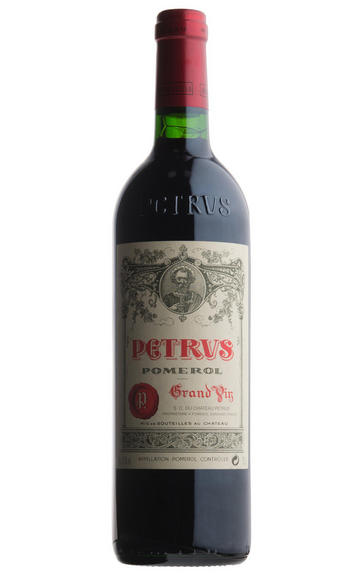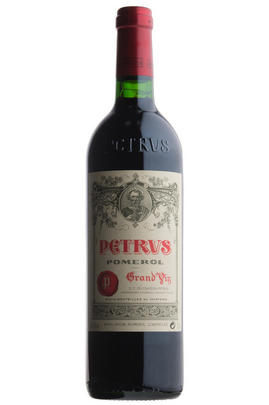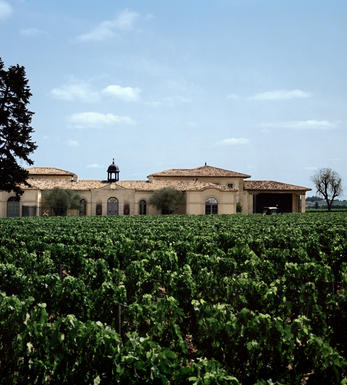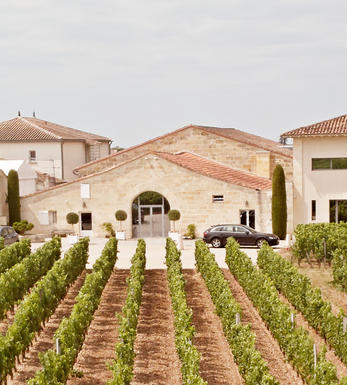
2017 Petrus, Pomerol, Bordeaux

Critics reviews
The 2017 Petrus was tasted on two occasions just over one week apart, the second on 9 April being significantly different to the first. My note comes from the second and as usual I afforded the sample 10 minutes to open.
It has an expressive bouquet that is slightly confit in style with red cherry, blackberry, black truffle and light iris scents, all detailed and focused. The bouquet needs less encouragement to open than the previous two vintages. The palate is extremely well balanced with a fine bead of acidity, fresh and vivacious from the very start. At its core lies a mixture of red and black fruit laced with black truffle and cracked black pepper, a discrete spiciness towards the velvety finish and then modest salinity lingering on the aftertaste.
It is the second reading that attested to the “serious” side of this Pétrus and its cerebral side. I found more grip and linearity, clearly more complexity and less fatness towards the finish and I anticipate that these facets will become more accentuated as it develops in barrel. Whilst not the greatest Pétrus that I have tasted out of barrel, Olivier Berrouet has fashioned an almost mercurial and beguiling Pomerol.
Drink 2024 - 2050
Neil Martin, Vinous.com (May 2018)
The 2017 Petrus is simply stunning. A rich, deep and voluptuous wine endowed with rapturous beauty. Vivid and wonderfully alive, with ripe, polished tannins, the 2017 is simply impeccable. Jean-Claude Berrouet told me he had never seen a harvest at Petrus stretch out over three full weeks. Olivier Berrouet added that the berries were quite small. He opted for longer skin contact than normal, about 30 days, with pump-overs of one volume of wine per day at the beginning of fermentation. Even in the early going, Petrus is shaping up to be truly magnificent.
Antonio Galloni, Vinous.com (May 2018)
One of the very few in the vintage where there is actual flesh on the bones, and lots of it. The danger in dry years is that tannins can get too angular, and the overall feeling too austere, but here they have successfully managed to maintain juice and aromatics. A three-week harvest at Petrus, a long window for this property where the terroir is so even. There is an awful lot to recommend here and is easily one of the best wines of the year. The aromatic side is extremely enjoyable, with touches of fresh hay, lovely gentle spice, tons of dark fruits, cinnamon and complexity. Extremely charming, with lots to say for itself.
Drink 2025 - 2042
Jane Anson, Decanter.com (February 2020)
Less than 50% new oak.
Very dark and super-fragrant. Beautifully intense cassis aroma, very pure, gorgeous dusty graphite nose, and a light note of violets. Beautifully dry and with the finest of textures. Opens up to sweet spice and some red fruit. Iris root – used in perfume – says winemaker Olivier Berrouet. Caressing texture, supple. Becomes ever more floral with air. Incredibly smooth. A beauty.
Drink 2027 - 2047
Julia Harding MW, JancisRobinson.com (April 2018)
Deep garnet-purple in colour, the 2017 Petrus comes galloping out of the glass with bold, expressive notions of Black Forest cake, blueberry preserves and Christmas pudding with nuances of molten chocolate, Chinese five spice, candied violets, liquorice and kirsch plus wafts of roses and cinnamon stick. Full-bodied, rich, spicy and fantastically concentrated, the palate has compelling freshness and a solid base of wonderfully ripe, velvety tannins, finishing very long and opulent. The aromatics at this youthful stage are atypical for Petrus and quite stunning—this 2017 is a bombshell! Furthermore, it is a unique style for this estate and one avid collectors should seek out!
Drink 2023 - 2053
Lisa Perrotti-Brown, Wine Advocate (March 2020)
I love the aromatics of this with crushed berries, violets and black olives. Hints of vanilla and some caramel. Decadent. Full-bodied and round with very creamy tannins that melt into the wine. It starts off slowly and then kicks off a few seconds later. The tannins are extremely polished and refined. Hard not to drink now, but wait.
Try after 2025
James Suckling, JamesSuckling.com (December 2020)
The 2017 Chateau Petrus is, as always, 100% Merlot that's from the top of the Pomerol plateau. The 2017 is an incredibly elegant, perfumed example from this estate that has terrific cassis, raspberry, and red currants fruits as well as lots of floral and violet hints, medium to full body, a beautiful spine of acidity, and building tannins. It's not a blockbuster like the 2015 and 2016, yet it’s flawlessly balanced, with stunning purity of fruit and a great, great finish. Give bottles a solid 7-8 years, and it should keep for 20-25+.
Drink 2027 - 2053
Jeb Dunnuck, JebDunnuck.com (February 2020)
About this WINE

Petrus
Petrus is a wine estate in Pomerol on the Right Bank of Bordeaux. It is among the most celebrated and recognisable wines in the world.
While the estate can trace its history to at least 1837, it flew relatively under the radar until around the 20th century. Madame Loubat, who became the sole owner in 1945, felt that the estate was truly special, and her efforts were instrumental in establishing Petrus on the world stage. She also appointed Jean-Pierre Moueix as the exclusive agent; he and his sons Jean-François and Christian were key in building the estate’s modern reputation. The Moueix family became majority owners here in 1969. In 2018, they were joined by American-Colombian Alejandro Santo Domingo, who purchased a 20% stake.
Petrus is located atop the Pomerol plateau. Most of its vines sit on a so-called “buttonhole” of blue clay soil, known as smectite. This soil’s ability to retain water is a huge benefit in the Pomerol appellation, where drought is a known issue. The vineyard is planted mostly to Merlot.
The estate is run today by winemaker Olivier Berrouet, previously of neighbouring Château Cheval Blanc. Olivier joined in 2008, taking over from his father, Jean-Claude, who had produced 44 vintages of Petrus in his time.

Pomerol
Pomerol is the smallest of Bordeaux's major appellations, with about 150 producers and approximately 740 hectares of vineyards. It is home to many bijou domaines, many of which produce little more than 1,000 cases per annum.
Both the topography and architecture of the region is unremarkable, but the style of the wines is most individual. The finest vineyards are planted on a seam of rich clay which extends across the gently-elevated plateau of Pomerol, which runs from the north-eastern boundary of St Emilion. On the sides of the plateau, the soil becomes sandier and the wines lighter.
There is one satellite region to the immediate north, Lalande-de-Pomerol whose wines are stylistically very similar, if sometimes lacking the finesse of its neighbour. There has never been a classification of Pomerol wines.
Recommended Châteaux : Ch. Pétrus, Vieux Ch. Certan, Le Pin, Ch. L’Eglise-Clinet, Ch. La Conseillante, Ch. L’Evangile, Ch. Lafleur, Trotanoy, Ch. Nenin, Ch. Beauregard, Ch. Feytit-Clinet, Le Gay.

Merlot
The most widely planted grape in Bordeaux and a grape that has been on a relentless expansion drive throughout the world in the last decade. Merlot is adaptable to most soils and is relatively simple to cultivate. It is a vigorous naturally high yielding grape that requires savage pruning - over-cropped Merlot-based wines are dilute and bland. It is also vital to pick at optimum ripeness as Merlot can quickly lose its varietal characteristics if harvested overripe.
In St.Emilion and Pomerol it withstands the moist clay rich soils far better than Cabernet grapes, and at it best produces opulently rich, plummy clarets with succulent fruitcake-like nuances. Le Pin, Pétrus and Clinet are examples of hedonistically rich Merlot wines at their very best. It also plays a key supporting role in filling out the middle palate of the Cabernet-dominated wines of the Médoc and Graves.
Merlot is now grown in virtually all wine growing countries and is particularly successful in California, Chile and Northern Italy.


Buying options
Add to wishlist
Description
One of the very few in the vintage where there is actual flesh on the bones, and lots of it. The danger in dry years is that tannins can get too angular, and the overall feeling too austere, but here they have successfully managed to maintain juice and aromatics. A three-week harvest at Petrus, a long window for this property where the terroir is so even. There is an awful lot to recommend here and is easily one of the best wines of the year. The aromatic side is extremely enjoyable, with touches of fresh hay, lovely gentle spice, tons of dark fruits, cinnamon and complexity. Extremely charming, with lots to say for itself.
Drink 2025 - 2042
Jane Anson, Decanter.com (February 2020)
wine at a glance
Delivery and quality guarantee